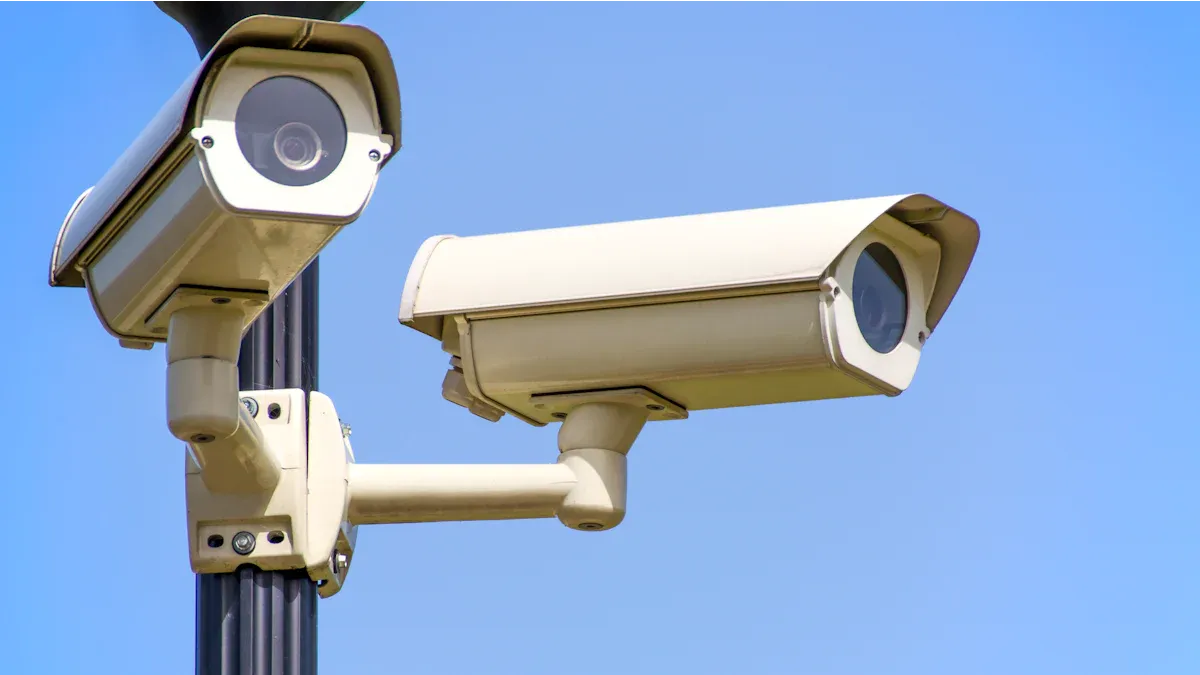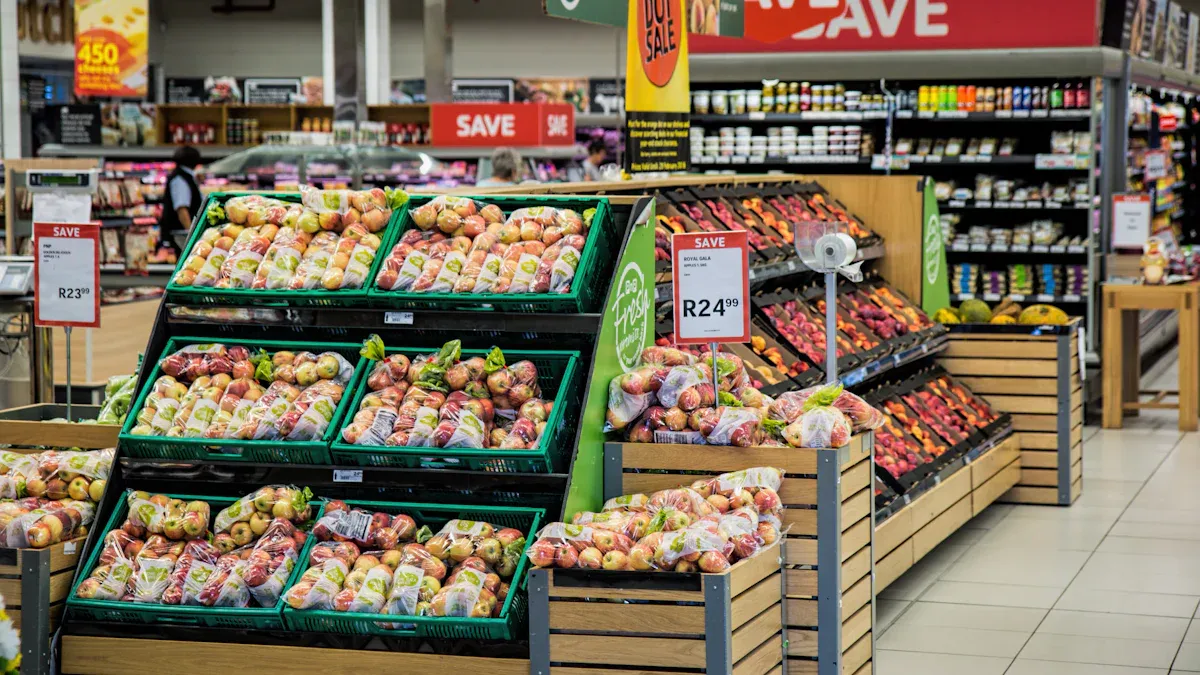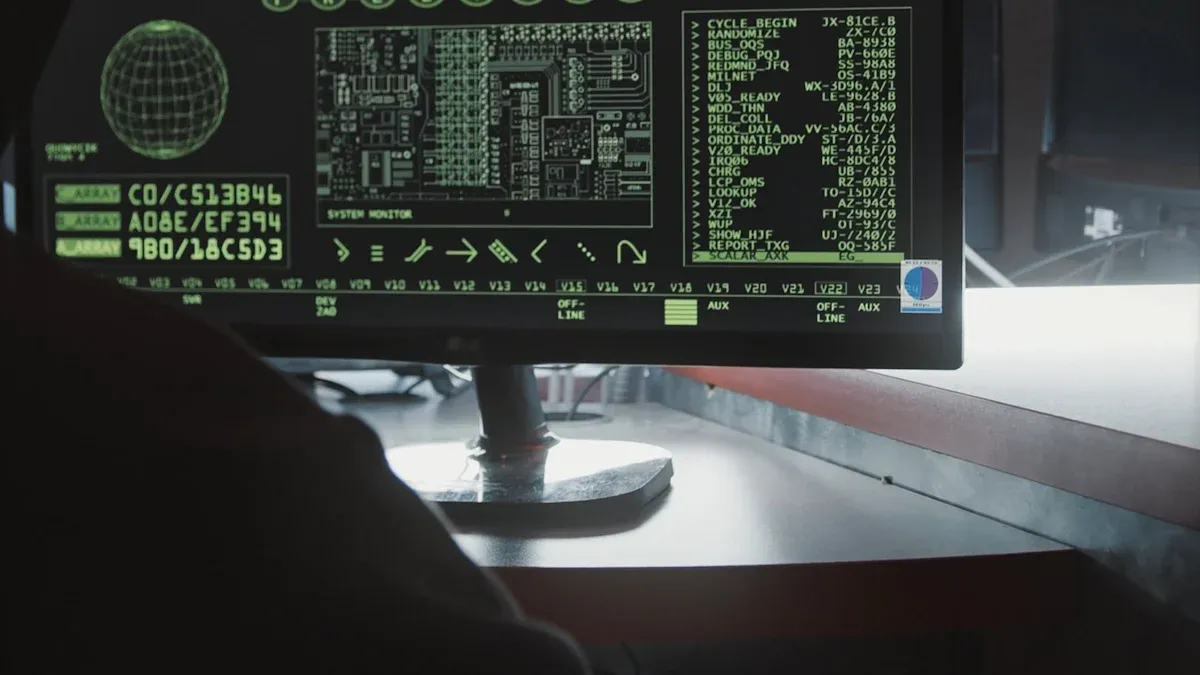Fault detection in unmanned store systems

You depend on unmanned stores to work smoothly every time you visit. Proactive fault detection helps you trust these systems and keeps them running. If a problem goes unnoticed, you might face locked doors, slow checkouts, or even security issues. Advanced detection systems, inspired by research in autonomous technology, now watch for problems before they grow. Early action helps you avoid costly disruptions and keeps your experience safe.
Key Takeaways
Proactive fault detection ensures unmanned stores run smoothly, preventing issues like locked doors and payment failures.
Regular audits and checks of hardware and software help identify problems early, ensuring a reliable shopping experience.
Real-time monitoring and AI technology quickly detect faults, allowing for immediate alerts and faster resolutions.
Training staff on fault response procedures prepares them to handle issues efficiently, minimizing disruptions for customers.
Maintaining strong security measures protects personal data and builds trust in unmanned store systems.
Unmanned store systems

Key features
You see unmanned store systems in many places today. These stores use smart technology to help you shop without staff. The main features make your experience fast and easy. You can check out by yourself, pay with your phone, and get help from machines. Stores use sensors and cameras to watch products and keep shelves full. AI helps track what you buy and gives you special offers. Some stores use robots to pick items for you. Others have kiosks where you scan and pay for your things.
Here is a table showing the most common technologies and components in different types of unmanned stores:
Type of Store | Key Technologies and Components |
|---|---|
Just-Walk-Out | Computer vision, sensors, high-cost technology, data protection compliance issues |
Stores with Vending Machines | Robotics for automatic picking, smartphone app ordering, theft prevention measures |
Self-Checkout Stores | Scan & Go apps, self-checkout terminals, age-restriction checks, loss prevention methods |
Fully Automated Stores | Smart vending machines, autonomous retail stores, automated checkout systems, RFID-based stores, AI-driven inventory management |
Semi-Automated Kiosks | Self-checkout kiosks, self-order kiosks, digital price tag kiosks, interactive product information kiosks |
You find these stores in places like hospitals, hotels, and grocery shops. Some stores work indoors, while others stand outside. Most use cashless payments, but some still accept cash.
Relevance of fault detection
You rely on unmanned stores to work every time you visit. If a system fails, you may not get inside or finish your purchase. Fault detection helps spot problems early. This keeps the store running and protects your shopping experience. When sensors or cameras break, the store might not track items or prevent theft. If payment systems stop, you cannot pay for your goods. AI and automation make stores smarter, but they need regular checks to stay safe.
Unmanned stores use these features to improve your experience:
AI and automation help manage inventory and personalize offers.
Contactless payments make transactions quick and safe.
Smart shelving keeps products stocked and reduces theft.
Data analytics give you special deals based on your shopping habits.
You benefit from these features in many ways:
You save time and enjoy a smooth shopping trip.
Stores lower costs by needing fewer workers.
AI helps save energy by adjusting lights and sounds when you enter or leave.
Fault detection makes sure these features work well. You get a safe, easy, and reliable shopping experience.
Types of faults
Hardware issues
You depend on many devices when you shop in unmanned stores. Cameras, sensors, and payment terminals help you complete your purchase. If a camera stops working, the store may not track what you pick up. Broken sensors can miss items or fail to restock shelves. Payment terminals that freeze or lose power can block your transaction. You may see robots in some stores. If a robot breaks down, it cannot help you find products or deliver items.
Tip: Regular checks and quick repairs keep hardware running smoothly.
Software issues
Software controls how unmanned stores work. You use apps to scan products and pay. If the app crashes or has bugs, you may not finish your shopping. Software errors can cause wrong prices or missing items in your cart. Sometimes, updates change how the system works. If updates fail, the store may not open or close at the right time.
You should report problems with apps or kiosks to help stores fix them faster.
Network problems
Unmanned stores need strong internet connections. Network issues can stop payment systems and block real-time updates. If the store cannot connect, inventory data may not match what is on the shelves. You might see products listed as available, but they are gone. Payment failures can stop you from buying what you need. These problems can make you lose trust in the store and lead to lost sales.
Note: Reliable networks help stores keep accurate records and process transactions quickly.
Security risks
You trust unmanned stores with your personal data. Security risks include hacking, data leaks, and stolen payment information. If someone breaks into the system, they may access your shopping history or payment details. Stores use encryption and strong passwords to protect you.
Security Risk | Impact on You | Store Response |
|---|---|---|
Data breach | Loss of privacy | Encryption, alerts |
Payment fraud | Stolen money | Secure payment systems |
Unauthorized access | Account takeover | Multi-factor login |
You help keep stores safe by using secure passwords and reporting suspicious activity. Fault detection systems watch for signs of attacks and alert staff to fix problems fast. 🛡️
Fault detection methods

Real-time monitoring
You want unmanned stores to work all the time. Real-time monitoring helps you spot problems as soon as they happen. The system checks cameras, sensors, and payment devices every second. If something stops working, you get an alert right away. This quick response keeps the store open and safe for you. Real-time monitoring also helps stores fix small issues before they become big problems. You see fewer delays and enjoy a smoother shopping trip.
Tip: Real-time monitoring can lower downtime and help you avoid long waits at checkout.
Sensor fault detection
Sensors play a big role in unmanned stores. They track products, watch for theft, and help with payments. If a sensor fails, the store may not know what you buy or when to restock. Sensor fault detection uses smart checks to find broken or weak sensors. The system can test sensors by sending signals and checking the response. If a sensor does not answer, the system marks it for repair. Some stores use advanced detection techniques, like those in self-driving cars. These methods use models to spot sensor faults quickly and with high accuracy. You get better service because the store can fix problems before you notice them.
Sensor Type | What It Does | Fault Detected |
|---|---|---|
Weight sensor | Tracks shelf stock | Missed restocking |
Camera sensor | Watches for theft | Blind spots, no video |
RFID sensor | Tracks items | Lost or wrong readings |
AI and machine learning
AI and machine learning help unmanned stores find faults that are hard to see. These systems learn from data and spot patterns that show something is wrong. For example, if a payment terminal acts strange, AI can notice the change and send an alert. Stores use machine learning models like Support Vector Machines and Artificial Neural Networks. These models can handle complex systems and find faults in real time. In tests, these methods reach over 94% accuracy in finding faults and over 97% in identifying them. You benefit from fewer errors and a safer shopping experience. AI also adapts to new problems, so the store stays reliable even as technology changes.
Note: AI-powered fault detection comes from research in autonomous vehicles and now helps unmanned stores work better.
Remote diagnostics
Remote diagnostics let experts check store systems from far away. You do not need to wait for someone to visit the store to fix a problem. The system sends data to a control center, where staff can see what is wrong. They can restart devices, update software, or guide repairs without coming to the store. This saves time and keeps the store running for you. Remote diagnostics also help stores manage many locations at once. You get faster fixes and better service.
You see that fault detection in unmanned stores uses smart tools and methods. These systems adapt to new problems and keep your shopping safe and easy.
Best practices
System integration
You should build fault detection into your store’s design from the start. Connect sensors, cameras, and payment systems so they work together. When you link these parts, you can spot problems faster. For example, if a sensor fails, the system can alert you and switch to a backup. Many stores use a central dashboard to watch all devices at once. This setup helps you see issues right away and fix them before they affect shoppers.
Tip: Choose systems that support easy updates and can add new devices as your store grows.
Regular audits
You need to check your systems often. Regular audits help you find hidden problems. Make a checklist for each device, such as cameras, payment terminals, and sensors. Test each one to make sure it works. You can use software tools to run these checks automatically. Some stores schedule audits every week. Others do them after big updates or changes.
Here is a simple audit checklist:
Device | Test Action | Pass/Fail |
|---|---|---|
Camera | Record video | |
Payment terminal | Process payment | |
Sensor | Detect item |
Note: Keep records of each audit. This helps you track patterns and spot devices that fail often.
Training and response
You should train your team to handle faults quickly. Teach them how to read alerts and follow response steps. Practice what to do if a device fails or if the system sends a warning. Some stores use short drills to test staff readiness. In one case, a store in Texas found a payment issue during a drill. The team fixed it in minutes, so real customers never faced a problem.
You can also set up clear response plans. Write simple steps for each type of fault. This way, everyone knows what to do and your store stays open and safe.
Challenges and trends
False alarms
You may notice that unmanned stores sometimes send alerts when nothing is wrong. These false alarms can happen often. In fact, more than 40% of alerts in unmanned store systems are false alarms. You might wonder why this happens. Here are the main reasons:
Rain or fog can confuse sensors and cameras.
Some sensors need a clear view and can miss things if something blocks them.
Small changes in the environment, like moving shelves or people walking by, can trigger alarms.
False alarms can slow down your shopping and make staff spend time checking problems that do not exist. You want systems that can tell the difference between real faults and harmless changes.
Scalability
You see unmanned stores opening in more places every year. As stores grow, you need fault detection systems that can handle many devices and locations at once. If you add new sensors or cameras, the system must keep working smoothly. You want easy ways to update and connect new technology. Stores that scale well can serve more customers and keep everything running without delays.
Privacy and security
You trust unmanned stores with your personal data. Cameras and sensors watch what you buy and how you move. You want to know that your information stays safe. Stores use encryption and strong passwords to protect you. They also follow rules to keep your data private. You should check for signs that a store cares about your privacy, like secure payment options and clear data policies.
Future advances
You will see smarter fault detection systems in the future. Stores use better training data and new machine vision models to reduce false alarms. Here are some strategies that help:
Strategy | Description |
|---|---|
Enhancing Training Data Quality | Better data helps systems spot real problems and ignore harmless changes. |
Continuous Refinement of Machine Vision Models | Regular updates keep models accurate and ready for new challenges. |
Regular Audits and Performance Monitoring | Frequent checks help find weak spots and keep systems working well. |
Integration of Multiple Techniques | Using different methods together makes fault detection more reliable. |
You will benefit from these advances. Stores will fix problems faster and keep your shopping safe and easy. New technology will help stores grow and protect your privacy.
You play a key role in keeping unmanned stores reliable. Strong fault detection helps you avoid problems and keeps your shopping safe. Advanced systems and new ideas make stores smarter every day.
Stay alert for new best practices.
Watch for updates in technology.
Share what you learn with others.
Remember, your knowledge helps unmanned stores succeed.
FAQ
What happens if a sensor fails in an unmanned store?
You may notice missing items or wrong stock levels. The system will alert staff to fix the sensor. Stores often use backup sensors to keep things running.
How do unmanned stores protect my personal data?
Stores use encryption and strong passwords. They follow privacy rules to keep your information safe. You can check for secure payment options and clear privacy policies.
Can unmanned stores work during a network outage?
Some stores use offline modes for basic functions. You might not get real-time updates or special offers. Payment options may be limited until the network returns.
How do I report a problem in an unmanned store?
Look for a help button on kiosks or apps. You can also call the support number posted in the store. Staff will respond quickly to fix the issue.
See Also
Common Issues Faced During Walmart Self-Checkout Process
Identifying Cash Mistakes at Self-Checkout and Fixes
The Future of Retail: Embracing AI-Driven Stores
Walgreens Self-Checkout: Benefits and Obstacles for Shoppers
Understanding AI-Enhanced Corner Stores: Insights for Retailers
